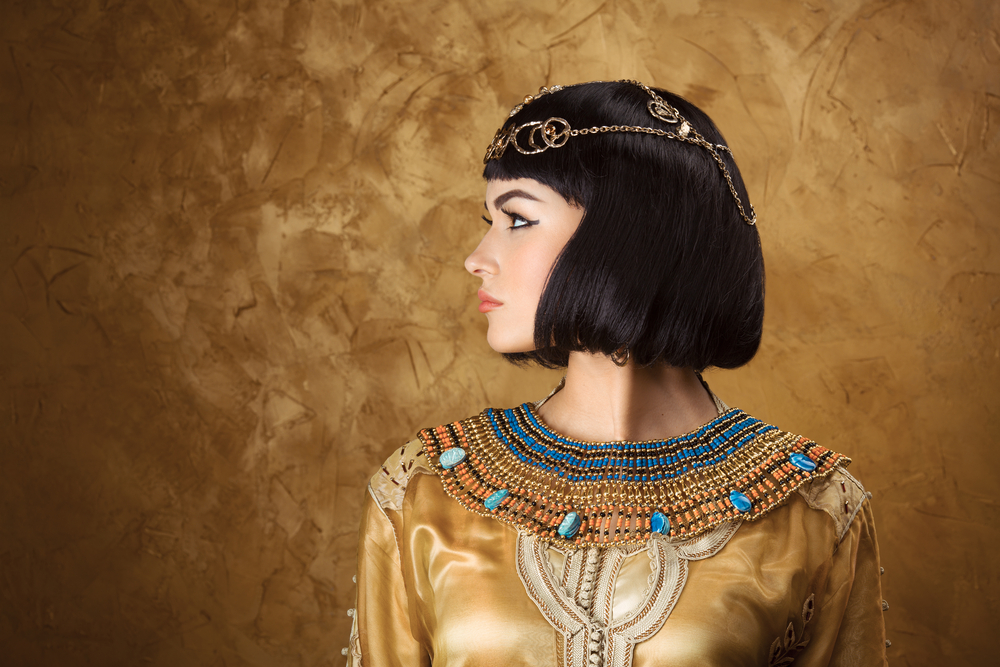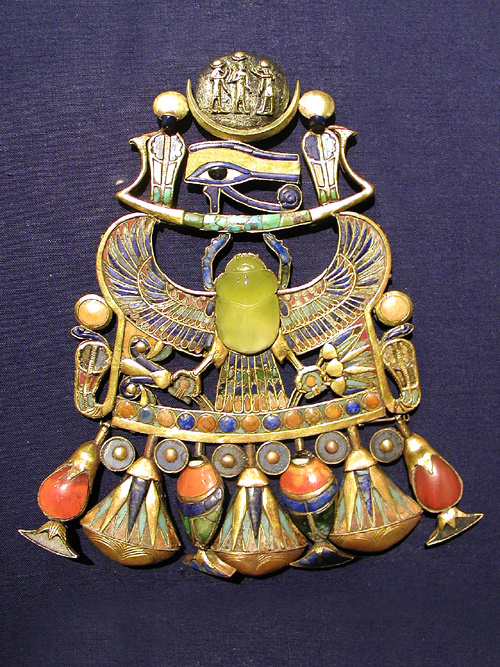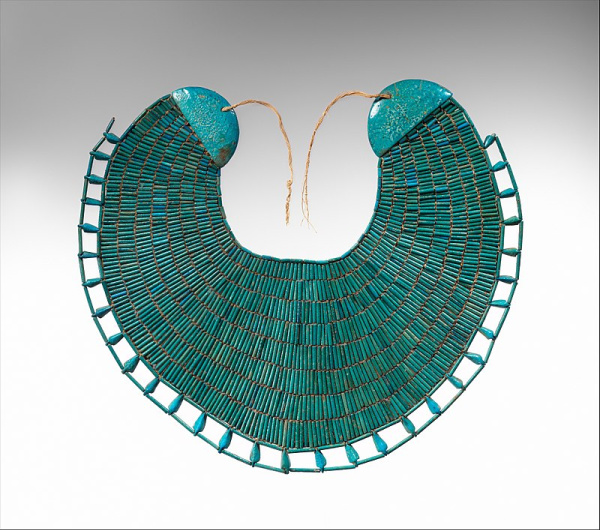Ancient Egyptian jewellery
Ancient Egyptian jewellery
Ancient Egyptian jewellery
-
Hannah
-
Hannah

What springs to mind when you think of Ancient Egyptian jewellery? Gold, I imagine. Stunning, bold designs. Perhaps an image of Cleopatra in an usekh collar, or the treasure discovered in Tutankhamun’s tomb: diadems, necklaces, pectorals, amulets, pendants, bracelets, earrings and rings.
Jewellery making in Egypt is a very long, very important tradition. By the time of the pharaohs, jewellery had come to be not only means of personal adornment but an overt statement of status, power and wealth – worn in life but also in death, hence the many treasures unearthed in tombs.

Pectoral of Tutankhamun; gold, silver and meteoric glass (source)
Gold was perennially popular, because it was seen as luxurious and precious, because its rich colour represented the sun god Ra, and because it is malleable and thus easier to work with than other metals. Coloured glass was used alongside semi-precious stones like lapis lazuli, carnelian and turquoise. Colour was important for symbolism in jewellery: green signified good health, fertility, resurrection and vigour, for example, and red represented blood, energy, power and life.

Broad collar, part of the funerary jewellery of Wah, estate manager of Meketre (source)
The design of the piece was also symbolic. The ankh, for example, meant immortality or the breath of life. The Eye of Horus (wadjet) symbolised protection, royal power and good health. The scarab beetle symbolised rebirth and on funerary jewellery it ensured reincarnation.
Many jewellery pieces told a story. In the collection of the Metropolitan Museum of Art in New York is the pectoral and necklace of Princess Sithathoryunet (believed to be the daughter of Senusret II). The museum describes its symbolism as follows:
Zigzag lines on the base bar represent the primordial waters out of which the primeval hill emerged. Each of the falcons, symbols of the sun god, clasps a circular hieroglyph meaning “encircled,” thus declaring the solar deity’s supreme power over the universe. The same hieroglyph, elongated to form a cartouche, encircles the throne name of Senwosret II, Khakheperre. Flanking the king’s name are two ankh hieroglyphs (meaning “life”) suspended from cobras whose tails are wound around the sun disk on the falcons’ heads. These snakes represent Nekhbet and Udjo, the traditional protector goddesses of the king. Supporting the royal cartouche is the kneeling god Heh clutching two palm ribs symbolizing “millions of years.” Thus the king’s life and existence in time are described as part of a universe created and sustained by the supreme sun god.

Necklace of Princess Sithathoryunet; gold, carnelian, lapis lazuli, turquoise, garnet and feldspar (source)
For women like Princess Sithathoryunet jewellery was especially important, for the Ancient Egyptians believed it imbued them with special powers which enabled them to support the pharaoh in his role as guarantor of divine order on earth.
Many people wore jewellery designed to protect the wearer from disease and accidents and to ward off evil. This is a legacy that has endured to this day. In Song of the Nile, Phares buys Aida a gold pharaonic-shaped eye pendant with a turquoise in the centre, not only because he wants to treat her and knows the necklace will look beautiful on her, but because, ‘It will protect you from the evil eye.’ The question is – will it work?